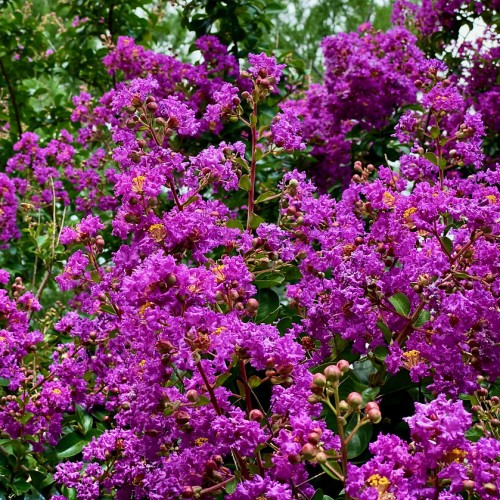
crape myrtle
Lagerstroemia indica 'Velma's Royal Delight'
Cycle:
Perennial
Watering:
Average
Hardiness Zone:
6 - 9
Flowers:
Flowers
Sun:
Full sun
Leaf:
Yes
Growth Rate:
Low
Maintenance:
Moderate
Salt Tolerant:
Yes
Care Level:
Medium
watering
When watering Crape Myrtle plants, it is important to keep the soil evenly moist but not wet. You should water your plants deeply and thoroughly so that the entire root system is getting water. During the summer months, Crape Myrtle will need to be watered about once a week. In the winter, reduce the amount of watering to about once a month. Make sure to check the soil to see if additional watering is needed. If the soil is still moist to the touch, skip the watering for that week.
sunlight
Crape myrtle (Lagerstroemia indica 'Velma's Royal Delight') will require 5 to 6 hours of direct sunlight per day. In regions with intense and cooler summers, it is recommended to site the plant in an area where it will receive ample morning and late afternoon sun with some dappled shade in the middle of the day. For warmer and wetter climates, crape myrtle can thrive in full, all-day sunlight. This species is tolerant of both full sun and partial shade, so placement should be determined by climate needs.
pruning
Crape myrtle (Lagerstroemia indica ‘Velma’s Royal Delight’) should be pruned during the late winter, shortly before bud break. This helps to keep the plant healthy, remove dead or diseased wood, keep it compact, and maintain a desirable shape. Pruning should be moderate and aimed at removing a few of the oldest branches at the base of the shrub each year. Remove branches with small diameters first, followed by thicker branches as needed. Hard pruning of this plant should be avoided, as it can reduce flowering and alter the desired shape of the plant.
